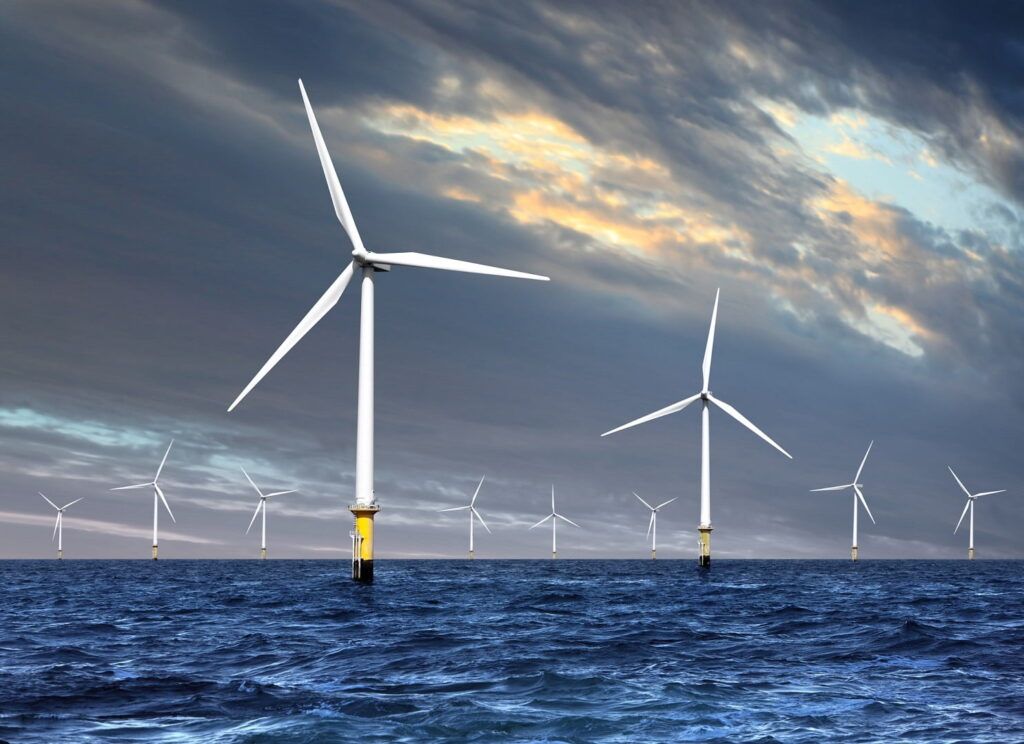 We are witnesses to a dynamic increase in electricity generation from offshore wind farms. According to statistics, the installed power should amount to 24.5 GW already in 2020, whereas by 2030 it should reach 100 GW. Offshore wind energy can really help to achieve Europe’s ambition to become number one in the area of renewable energy
We are witnesses to a dynamic increase in electricity generation from offshore wind farms. According to statistics, the installed power should amount to 24.5 GW already in 2020, whereas by 2030 it should reach 100 GW. Offshore wind energy can really help to achieve Europe’s ambition to become number one in the area of renewable energy
sources.
Wind farm construction
Construction of wind farms in an offshore zone involves higher investment and operation costs compared to onshore wind farms. However, stable and stronger wind conditions prevailing at sea, also at smaller heights, favor construction of offshore wind farms. This also makes it possible to use lower masts and to achieve high equipment efficiency. Another advantage is also a smaller number of legal and environmental constraints than in case of onshore wind farms. It is also important that the area of a plot is large enough to enable installation of turbines according to a specific pattern where the distance between rows and columns is 4 – 8 times the diameter of the rotor, which significantly reduces the risk of aerodynamic shadow.
Types of wind turbines
Depending on the sea depth, seabed geology or loads caused by environmental factors (wind, precipitation, tidal waters, ice cover or earthquakes), appropriate form of the structure and its foundation method are selected. The method of its installation may have a significant impact on changing direction of sea currents, tides, sedimentation processes or wave direction. Most turbines are constructed in shallow waters and at a small distance from the shore. This is mainly due to lower costs related to construction of transmission networks and their operation later on. The turbines are placed on a fixed foundation which may take the following forms: a single pile (monopile), a suction caisson, a gravity-based foundation, a tripod or a jacket foundation. Above the intermediate depth, a displacement foundation in the form of a pontoon, column, a tension leg (TLP) or a semi-submersible platform is used. These types of structures may occur in deep-water locations and may be fixed to the seabed by means of a set of chains. Concrete blocks, suction anchors, anchor plates, gravity anchors, dragging anchors or torpedo anchors are used as the anchoring element.
Offshore wind turbine inspection
All turbine structure components require regular inspection and
maintenance. It is the responsibility of the turbine owner / operator whose obligation is to ensure all safety measures and functionalities during turbine operation. The intervals between subsequent inspections are defined by the manufacturer and classification societies. The average service life of a turbine is from 20 to 30 years. The underwater part of the turbine is particularly exposed to environmental and human impact in areas with increased water traffic. Its inspection should include monitoring of the structure condition (cracks, dents, deformation, etc.), bioaccumulation, corrosion and anodic protection. Special attention should be given to the foundation fixing. The foundation stability and condition is influenced by the impact of vibrations, waves or currents. The foundation should be checked for scouring, deposition of bed material, condition of the foundation scouring protection. The elements fixing displacement turbines to the seabed (i.e. chains, anchors, etc.) also require inspection. During the underwater inspection, pending issues from the
previous periodic inspections also need to be verified.
Inspection of the transmission network
Inspection is also required for the entire transmission network which forms a critical infrastructure enabling correct operation of the wind turbine units. Considerable lengths of submarine cables impose a requirement for inspection of the cable condition and possible hazards rather than continuity which is checked automatically anyway. Depending on the cable laying method, the inspection may consist in checking the seabed in the cable vicinity or verifying the protective mattresses for damage by anchors or fishing equipment. Cables routed to turbines have multiple layers of sleeves, armors and sheaths. Transmission cables used for offshore wind farms are laid on the seabed and these are usually submarine cables rated at 33 kV or 66 kV. In most cases, a communication cable (in the form of a fiber-optic cable) is routed inside the submarine cables. The cables are laid to create internal power and communication networks. They provide connection between individual wind turbine groups as well as between wind turbines and internal substations. The substations are also connected with each other and then the cable is routed to an external substation.
Renewable Energy – Why Eversub?
An effective solution for maintenance of wind turbines and the related transmission networks is an underwater inspection using an ROV (Remotely Operated Vehicle) equipped with cameras, hydroacoustic monitoring instruments, laser equipment and NDT equipment. They may be launched from the lowest deck of a turbine or vessel. Eversub has the necessary specialist equipment to carry out such inspections, as well as the necessary licenses and certificates. Completion of the works is confirmed with a detailed report including full documentation. We are open to collaborate with customers worldwide to provide top quality services.